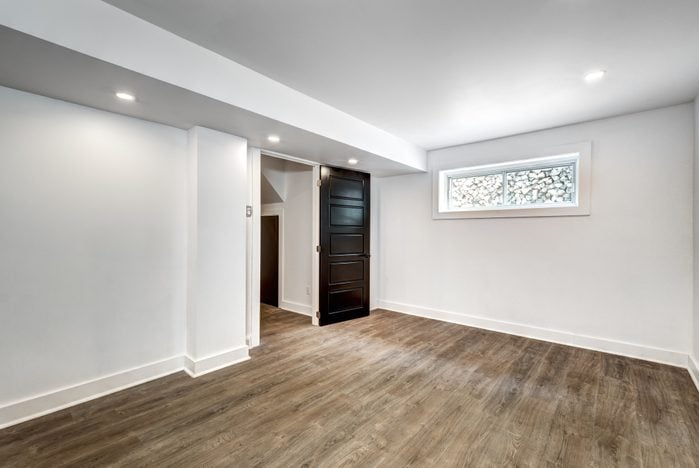Does your gloomy basement have you feeling down in the dumps? Here are some ways to cheer things up with natural light, and many are DIY-able.
8 Ways To Add More Natural Light In Your Basement
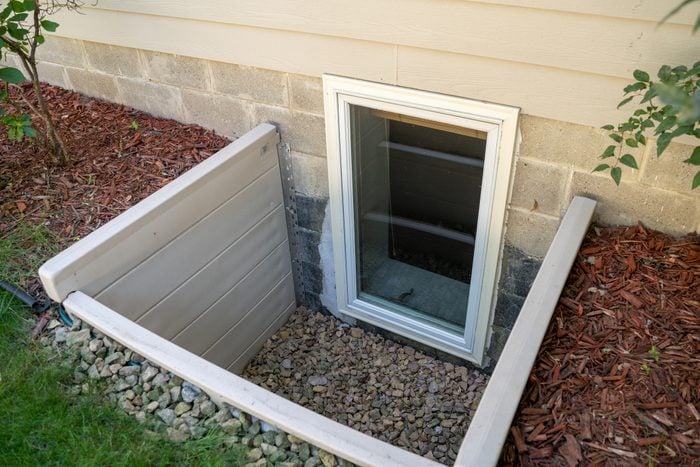
Add Windows
Every basement needs at least one egress window to satisfy the fire code, and every basement bedroom requires an additional one, but there’s no limit. The more you add, the brighter things will be down there.
It’s best to install windows during new construction, but you can do it anytime. It costs from $2,500 to $5,000 to dig a window well and install an egress window in the foundation wall. A half window placed above the foundation — which requires no well — costs $1,000 to $2,000 to install.
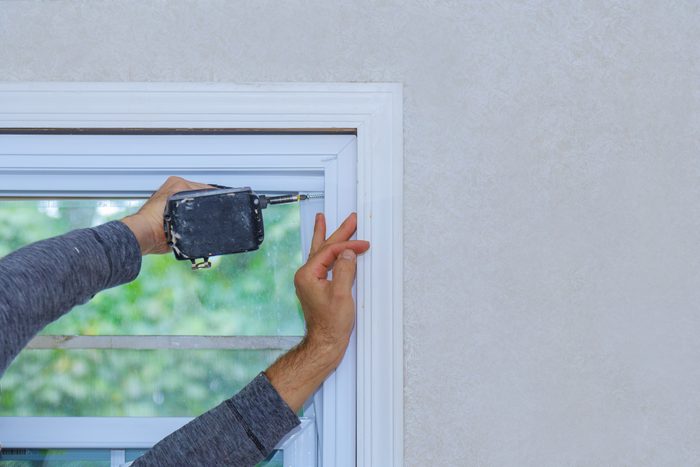
Modify Existing Windows
Existing basement windows don’t always realize their potential for light transmission. Simple improvements include deep-cleaning the glass and installing curtain rods long enough to keep the curtains completely open.
Other improvements may require professional help. Those include replacing frosted glass with clear, replacing small windows with larger ones and removing security bars and grates that block the light.
Hopper windows that tilt outward or inward to open are standard in basements, but they tend to have thick wood frames. Consider replacing them with sliding windows with vinyl or aluminum frames.
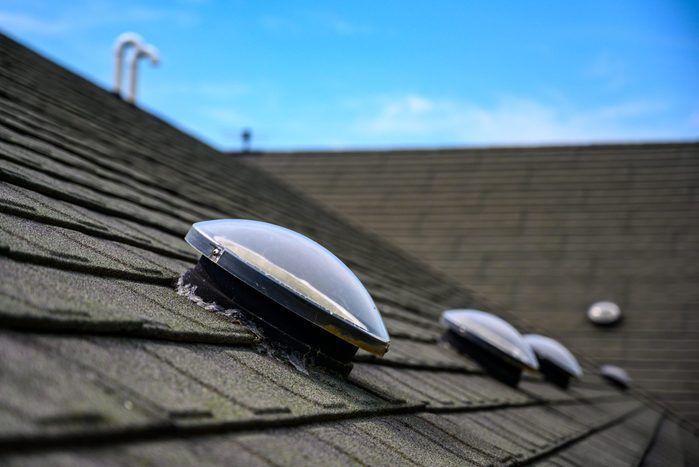
Install Solar Tubes
Solar tubes, aka tubular skylights, bring light into a dark space. A solar tube consists of a roof-mounted dome, a 10-inch metal tube that extends to the ceiling of a room, and a ceiling-mounted diffuser that mimics a light fixture.
The tube needs to pass through intermediate stories before it reaches the basement, which can be a problem. One solution: Running it through a closet where no one will see it.
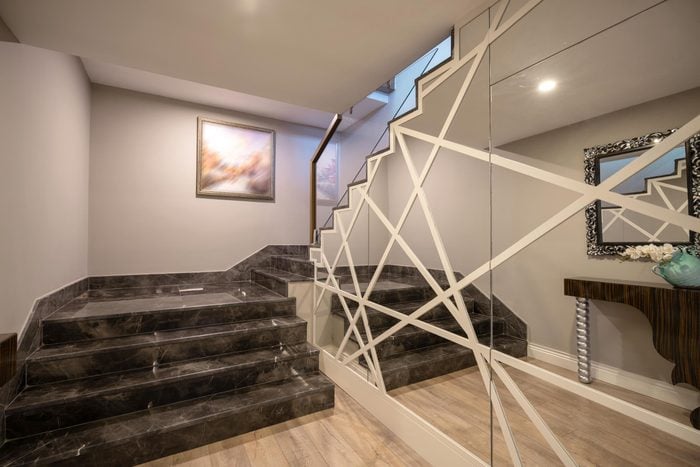
Amplify Light with Reflection
In feng shui (the art of space harmony and balance), mirrors reflect and multiply. To make the most of limited sunlight, put them in front of windows, angled to reflect light onto the walls or ceilings. They can also brighten dark corners of the basement.
Shiny stainless steel or glass furnishings can have the same light-amplifying effect. Prisms hanging in the windows will create a kaleidoscope-like effect that cheers up the space on bright, sunshiny days.
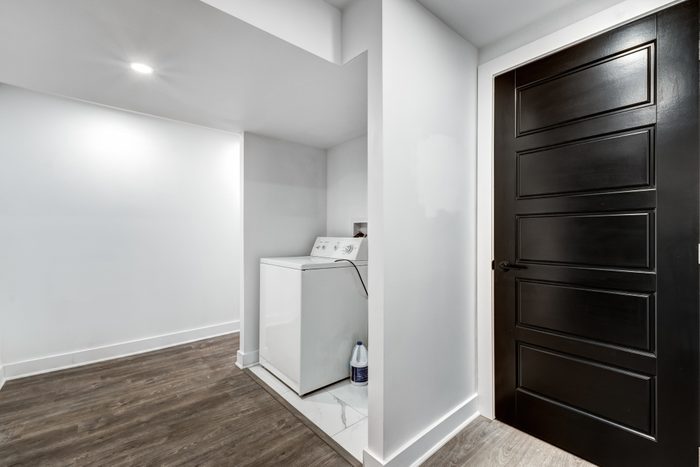
Use Light-Colored, Glossy Paint
Highly reflective glossy paint can provide the same effect as mirrors, but that isn’t the only reason to use it. The higher its gloss, the more durable the paint. That makes a difference in a space that needs extra protection against moisture incursion. High gloss paint is also easier to clean, and clean walls are bright walls.
Choose light colors like whites, off-whites and pastels to maximize brightness. This rule also applies to any furniture you paint and bring into the space.
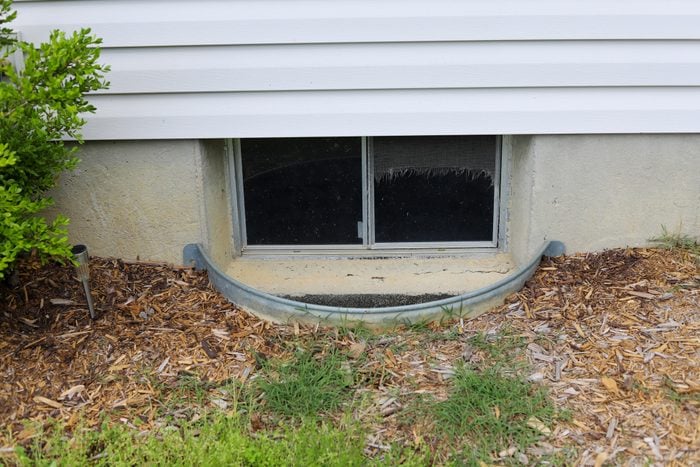
Control Light from Outdoors
Basement windows are often dug into window wells, and wells full of clutter and overgrown vegetation won’t allow much light in. Make clearing out the wells part of your cleaning routine.
Window wells are usually covered to keep out animals and prevent kids from falling in. Choose transparent bubble-type covers instead of grates or solid wood covers. The curved shape creates a lens effect that magnifies sunlight falling on the windows. Before you move ahead, here’s what you need to know about faux basement windows.

Eliminate Clutter
The simplest way to brighten a room? Clearing out all the obstacles that block light. Place furniture against walls, not in the middle of the room. And find someplace else to hang your coats, towels and laundry.
If you use the basement for storage, the same advice applies. Put the things next to a wall or, if possible, in a seldom-used area. Keep surfaces free of clutter to maximize the feeling of spaciousness, because spaciousness and light go hand-in-hand.
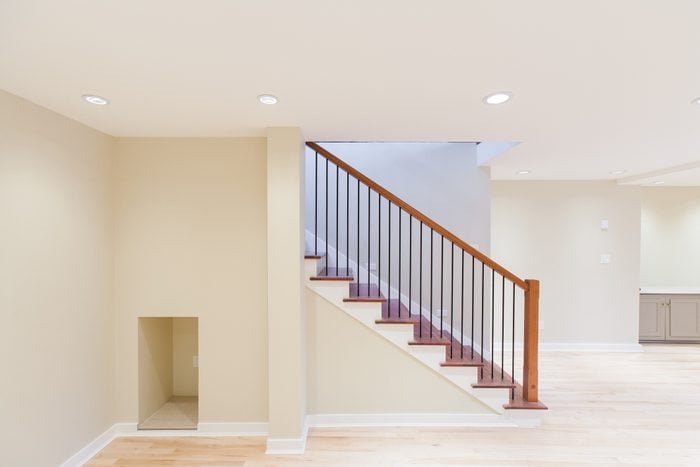
Install Light-Colored Flooring
All your efforts to brighten the basement will be foiled by dark flooring that absorbs light. Luxury vinyl flooring is perfect for basements, and it comes in lots of light-colored patterns. Depending on how dry the basement is, you may want engineered hardwood. If so, go with a blonde species like maple or birch.
You might even to paint the concrete floor with epoxy. If so, you won’t have any trouble finding light tones, and gain the advantage of epoxy’s high reflectivity.





















